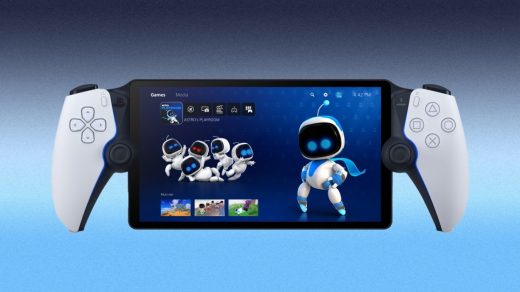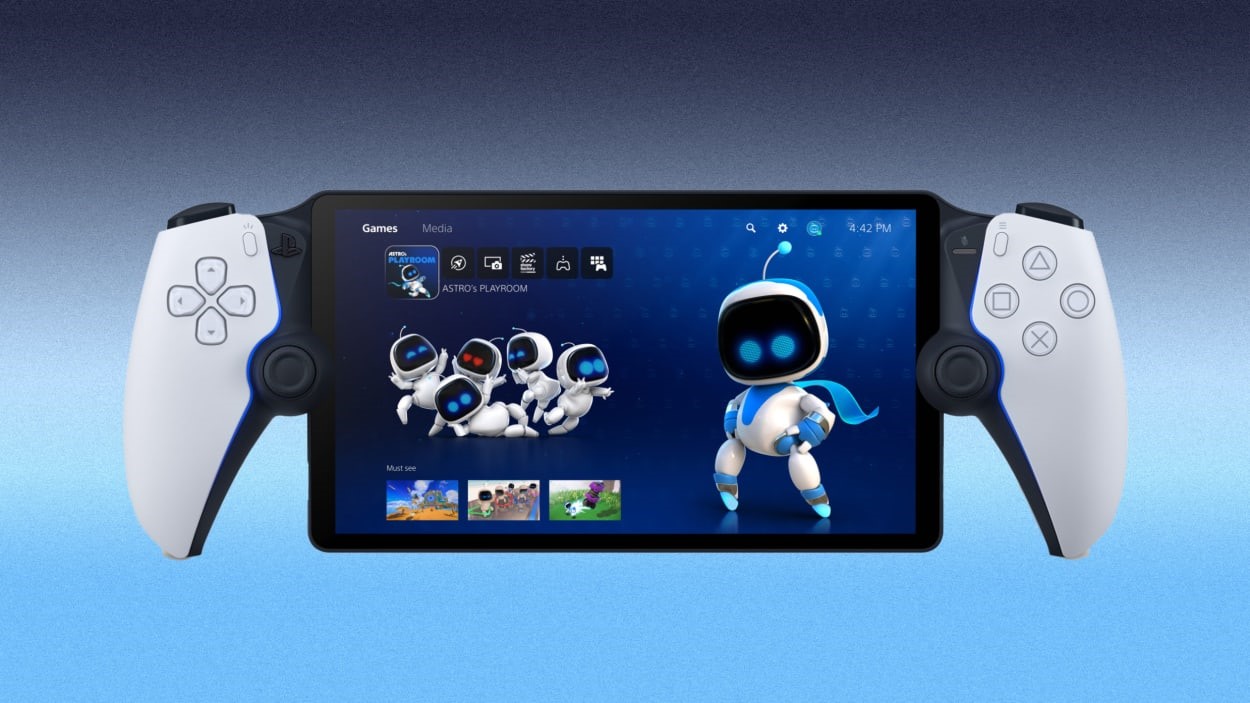Sony’s PlayStation Portal tries to fill a gaping hole in the company’s lineup
By Chris Morris
You can’t talk about the new PlayStation Portal without talking about the Nintendo Switch.
Sony has long wanted to be a bigger player in the portable gaming market. It had some success with the PSP and Vita, but the sun has long set on both of those systems—and Nintendo upped the game with the Switch, letting people play on their TV or take their game on the go. The Portal seeks to emulate that sort of flexibility, but it’s hamstrung by a few limitations that ultimately seem destined to make it a niche product for the most die-hard of PlayStation fans.
To be clear, the PlayStation Portal, which launches November 15 with a suggested retail price of $200, is a wonderful device when it works well. It has a good-size, beautiful 1080p screen that lets games pop visually. The DualSense controller, which straddles both sides of that screen, might feel a bit awkward in your hands at first, but you quickly get used to it, and muscle memory lets you operate the controls seamlessly. But it stops far short of being a full-fledged mobile gaming device. Instead, it’s an extension that can’t travel too far from the base PlayStation 5 (which you’ll need to own already). And that’s the Portal’s Achilles’ heel.
Despite its appearance, the Portal isn’t meant as a true mobile gaming device. It’s meant to help players enjoy their PS5’s games via Remote Play. That means games don’t run directly on the Portal and can’t be played from the cloud. Instead, they’re flung there from the PlayStation 5. It’s a good use case for when one person wants to watch a show on the TV the PlayStation is hooked up to and another person wants to keep playing Marvel’s Spider-Man 2. (But it is not useful if two people want to use the PS5.)
Reduced household strife is a good thing, but is it worth $200? Maybe, if it were entirely reliable. And, sadly, that’s where we get to the other issue with the Portal.
The quality of your play experience on the Portal will depend in large part on two things: How strong and reliable your home’s Wi-Fi connection is and the kind of games you like to play.
The ideal situation is when your PlayStation is in the same room (and it doesn’t hurt to have a mesh Wi-Fi system that spreads the signal evenly throughout your home). Assuming you have a decent connection, you should be able to play things like Spider-Man 2 without any noticeable degradation, other than onscreen text, which might be hard to read for some.
If you’re playing a multiplayer game, things are going to be a little tougher. Screen resolution wasn’t as strong in our tests, and there was noticeable lag—meaning we died faster in Fortnite than we usually do. And if you prefer something where precise timing is at the heart of the game, you’re going to have to strongly resist the urge to rage-quit using the PlayStation Portal.
The touchpad functionality on the Portal is another pain point. While it’s not a bad experience, per se, it’s poorly explained, so you’ll need a lot of trial and error before you figure out how to access a main menu and not some other game mode.
Despite the hiccups, the PlayStation Portal does offer some strong advantages. It’s a good way to let two (or more) members of the household enjoy separate entertainment options. Parents who are playing a violent game can do so away from the eyes of small children. And, assuming you’re a fan of single-player games and have a good household internet connection, it’s nice to be able to change your gaming environment from time to time.
But is that worth the expense? To the loyalist PlayStation fans who want a little more mobility, certainly. But for most other gamers, that’s going to be hard to justify, especially given the PS5’s ability to offer Remote Play on other screens, including laptops and tablets, which you can pair with your standard PS5 controller.
(9)



